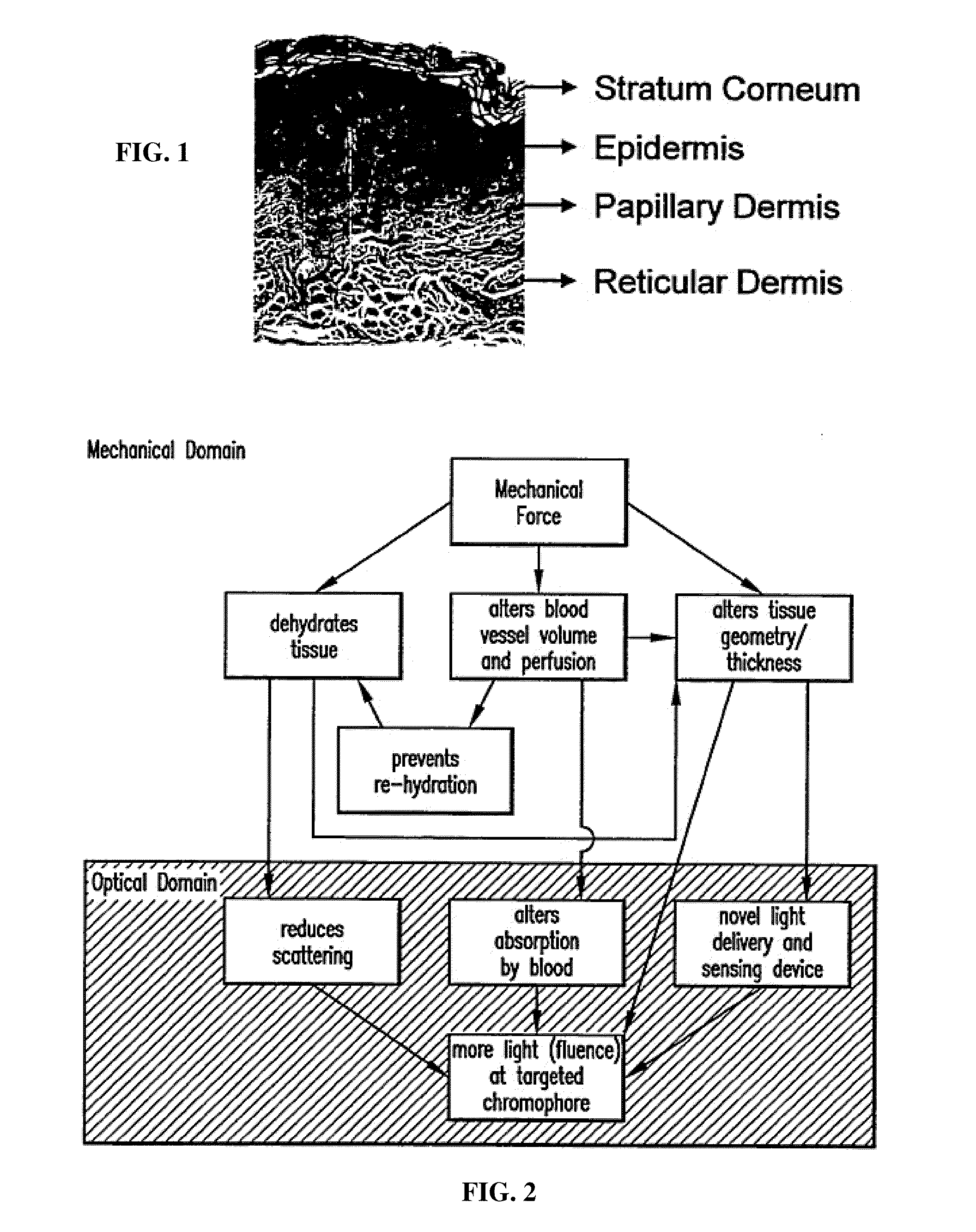Tissue optical clearing devices for subsurface light-induced phase-change and method of use
- Summary
- Abstract
- Description
- Claims
- Application Information
AI Technical Summary
Benefits of technology
Problems solved by technology
Method used
Image
Examples
example 1
Tissue Optical Clearing Device (TOCD) on Rat Skin
[0156]The first TOCD embodiment 100 allowed usage of direct mechanical force to enhance light penetration and subsurface femtosecond photodisruption. The second TOCD embodiment 200 was designed to demonstrate the clearing effect of vacuum related compression.
[0157]The first embodiment of the TOCD 100 comprises a monolithic array of pins 110 disposed on a circular resin base 112. A sample may be attached to pins with the adipose layer 122 facing towards pins. A piece of microscopic glass slide was attached to the epidermis layer of skin sample. At least one C-shaped clamp applies pressure to the skin sample for direct mechanical forces. The scale of mechanical force was controlled by screws on clamps. Pins on the base had a diameter of 2 mm, a height of 2 mm, and a center-to-center distance of 4 mm. The compressed tissues were located above the pins and uncompressed tissues are between pins.
[0158]The second embodiment of the TOCD 200 c...
PUM
 Login to View More
Login to View More Abstract
Description
Claims
Application Information
 Login to View More
Login to View More - R&D
- Intellectual Property
- Life Sciences
- Materials
- Tech Scout
- Unparalleled Data Quality
- Higher Quality Content
- 60% Fewer Hallucinations
Browse by: Latest US Patents, China's latest patents, Technical Efficacy Thesaurus, Application Domain, Technology Topic, Popular Technical Reports.
© 2025 PatSnap. All rights reserved.Legal|Privacy policy|Modern Slavery Act Transparency Statement|Sitemap|About US| Contact US: help@patsnap.com



